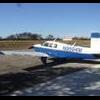How much crank endplay do you feel on prop, IO 360
-
Members Online
- pirate
- Robm
- MikeOH
- varlajo
- redbaron1982
- ta2too
- Danb
- Guillaume
- KSMooniac
- hammdo
- Jetdriver
- eman1200
- Fandano8691
- 201Mooniac
- gevertex
- shawnd
- Jeff Uphoff
- Western Flyer
- Schllc
- TCC
- haymak3r
- Justin Schmidt
- BloodRedSkies
- tb5847
- TB bolts
- 1980Mooney
- Rotorhead
- Fix
- Greg Ellis
- Ragsf15e
- N201MKTurbo
- Willpool101
- MDMooney
- Andy95W
- Hank
- AndreiC
- christaylor302
- Paul Thomas


Recommended Posts
Join the conversation
You can post now and register later. If you have an account, sign in now to post with your account.